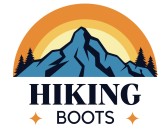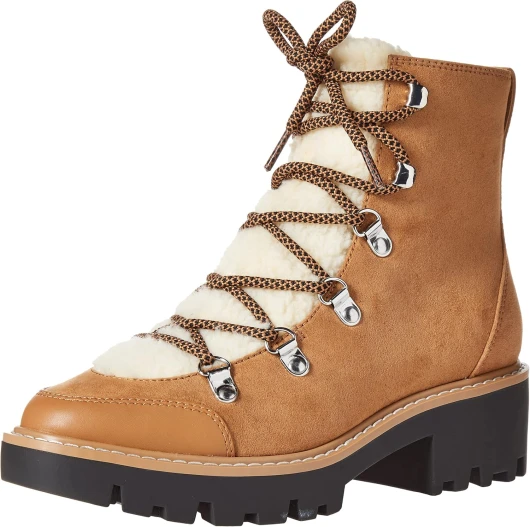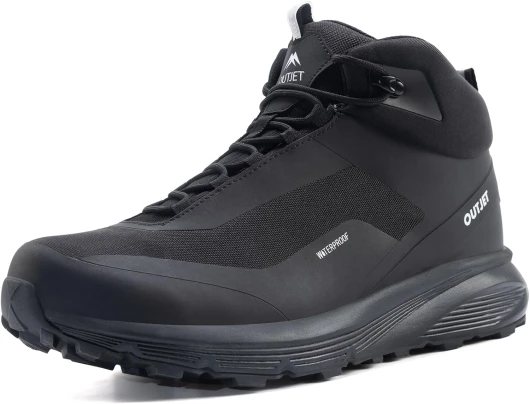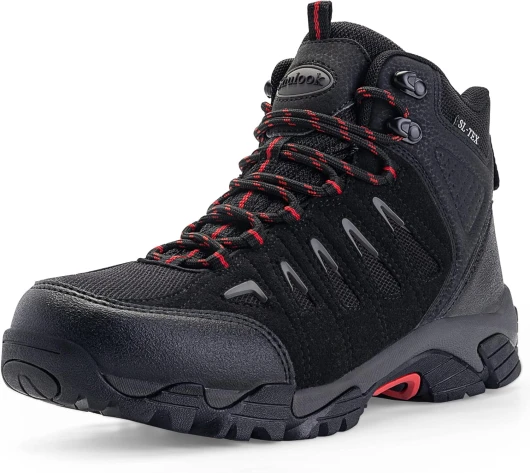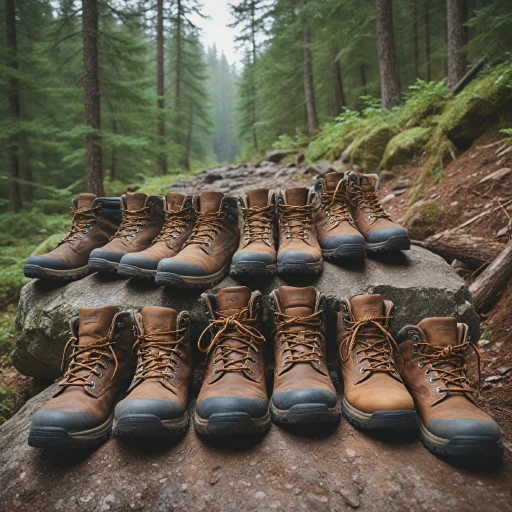
Understanding the Importance of the Right Fit
Finding Your Perfect Fit
Choosing the right pair of hiking boots can be daunting, especially with so many options available for both men and women. The importance of finding boots that fit properly cannot be overstated, as an ill-fitting pair can lead to discomfort, blisters, and even injury during your treks. Your feet, which bear the brunt of every adventure, need boots that provide adequate support and comfort. Key considerations include:- Sizing and Comfort: Boots should fit snugly but not tightly. Your toes should be able to wiggle freely, and the heel should not slip. Try on hiking boots with the socks you'll wear during hikes, as this affects the fit.
- Ankle and Arch Support: Essential for preventing injury on uneven terrain, ensure the boots provide appropriate support for your ankle. Check if they stiffen upon lacing, indicating adequate support.
- Break-In Period: New hiking boots, especially those made of leather, might need a break-in period. Wear them on short walks before hitting the trails. This allows the boots to mold to your feet and can help avoid blisters.
Materials Matter: Choosing the Best for Your Needs
Key Materials and What They Offer
Choosing the right materials for your hiking boots is essential for ensuring comfort, durability, and functionality. Each material offers distinct advantages, and understanding these can help you select the best pair tailored to your hiking needs, whether you're braving wet trails or seeking lightweight flexibility.
Leather is a preferred choice for many seasoned hikers due to its durability and abrasion resistance. It's ideal for rough terrains where ankle support and protection from rocks are paramount. Though typically heavier than synthetic materials, leather boots, including the popular Merrell Moab range, provide excellent toe protection and can be waterproofed with proper treatment, making them versatile for both dry and damp conditions.
Synthetic materials, such as nylon and polyester, offer a lightweight alternative to leather. These materials dry faster and are often incorporated into the design of boots like Salomon Quest and mid waterproof models, making them suited for wet hiking conditions without adding undue weight. They tend to be more flexible, which benefits hikers focusing on speed and agility.
Waterproof Options and Breathability
When selecting hiking boots, balancing waterproof capabilities with breathability is crucial, especially for women who often seek lighter boots with ample ventilation. Materials like Gore-Tex (GTX) membranes are favored for their ability to keep feet dry in wet environments while allowing moisture from sweat to escape, ensuring comfort over long hikes. Using a mid GTX design can provide superior waterproof performance without sacrificing breathability.
For those interested in mid hiking shoes or trail runners, it’s important to evaluate how well the footwear manages moisture to prevent damp, uncomfortable feet. Brands like Ultra Raptor often combine breathable mesh uppers with waterproof liners, achieving this crucial balance.
Understanding Your Needs and Budget
Ultimately, the best hiking boots are those that meet your specific adventure requirements at a reasonable price. For men seeking out men waterproof designs or women opting for boots women can comfortably wear, it’s helpful to identify which features are non-negotiable—for instance, weight pair for those carrying heavy backpacks, or boot flexibility for trail runners.
If you're looking for boots that excel in diverse conditions, robust construction featuring quality materials is a must. Evaluate all-weather suitability, from waterproof hiking needs to lightweight flexibility, to ensure an excellent fit for your treks.
For more tips on making the right choice for women's hiking boots, you can refer to our detailed guide covering diverse aspects from fit to function.
Traction and Tread: Navigating Different Terrains
Gripping Surfaces with Confidence
Navigating varied landscapes is a quintessential part of hiking, and having the right traction is paramount. Whether you're trekking through mud, scaling rocky trails, or crossing streams, the tread pattern of your hiking boots can significantly impact your stability and safety. Choosing the right tread involves understanding the types of terrain you'll encounter:- Rocky Trails: For rocky paths, a boot with deep lugs and a sticky rubber outsole is a must. This ensures that you maintain a grip on unstable surfaces. Brands like Salomon Quest and Merrell Moab are renowned for providing excellent durability and grip on rocks.
- Mud and Wet Terrain: Hiking boots designed for wet conditions often incorporate wide-spaced lugs. This design helps prevent mud from clogging up your outsole, maintaining traction. Opt for waterproof boots to keep your feet dry, and consider boots with a Gore-Tex lining for added protection from moisture.
- Mixed Trails: If your hikes often take you through a variety of terrains, consider hybrid tread patterns. Such designs strike a balance between aggressive grip and flexibility, ensuring you’re prepared for any trail.
Waterproofing and Breathability: Balancing Comfort and Protection
Striking the Balance Between Comfort and Protection
When it comes to hiking boots, finding the right balance between waterproofing and breathability is crucial for both comfort and protection. Whether you're trekking through a damp forest or navigating a dry, rocky trail, the right pair of boots can make all the difference.
Waterproof hiking boots are essential for keeping your feet dry in wet conditions. Materials like Gore-Tex (GTX) are popular for their ability to repel water while allowing moisture from sweat to escape. This technology is a staple in many top-rated boots, including models like the Salomon Quest and Merrell Moab, which are favored by both men and women hikers for their reliable performance.
However, it's important to note that while waterproofing is vital, breathability should not be overlooked. Boots that are too impermeable can lead to sweaty feet, which can cause discomfort and even blisters. Look for boots that offer a good balance, such as mid waterproof options that provide adequate protection without sacrificing airflow.
For those who prefer lightweight hiking shoes or trail runners, breathability often takes precedence over waterproofing. These options are ideal for dry conditions or shorter hikes where the weight of the boot is a more significant concern. Brands like Ultra Raptor offer excellent lightweight options that still provide ample support and comfort.
Ultimately, the best hiking boots for you will depend on your specific needs and the environments you plan to explore. Consider factors like the weight of the pair, the level of ankle support, and the type of terrain you'll encounter. By prioritizing both waterproofing and breathability, you can ensure your hiking experience is both comfortable and enjoyable.
Weight and Flexibility: Finding the Right Balance
Navigating the Balance of Weight and Flexibility
Finding the perfect balance between weight and flexibility in hiking boots is essential for a comfortable hiking experience. While a heavyweight pair might offer superior ankle support and protection, lightweight hiking boots provide agility and comfort, making them ideal for various trails. A lightweight design is particularly favored by trail runners and short-distance hikers. Boots like the Merrell Moab or the ultra-lightweight models offer the flexibility needed for swift movement while keeping the feet nimble on the trail. On the other hand, heavier boots, such as leather hiking boots or those with robust construction, often rated highly by many seasoned hikers, are preferred for challenging terrains. These boots provide the necessary ankle support and stiffness to handle rocky or uneven grounds, making them a preferred choice for best hiking experiences in demanding environments. Many hikers don't mind a little extra weight if it means better durability and protection, especially when tackling rough trails or long-distance hikes. Boots with the Mid GTX or Gore Tex technology fall into this category, offering a dependable compromise with the promise of longevity and waterproofing. When considering hiking shoes for women and men, you should weigh the flexibility of a pair against the specific needs of your trail type. Mid-hiking boots, for instance, strike a better balance in providing comfort without compromising on support. Whether you are hiking in a waterproof mid or venturing out in men hiking boots, understanding your preferences will lead you to the best option. For those seeking a mid-ground solution, shoes like the Salomon Quest or boots with an ultra-raptor grip offer versatility across a range of conditions without adding excessive weight. Ultimately, the right pair of boots, whether they lean more towards flexibility or durability, will contribute significantly to your overall hiking experience. Properly chosen hiking boots can confer confidence, allowing you to fully enjoy your adventure, regardless of the trail's demands.Caring for Your Hiking Boots: Maintenance Tips
Essential Care Practices for Longevity
Taking care of your hiking boots is crucial to ensure they remain comfortable and durable for every adventure. Whether you have a sturdy pair of leather boots or lightweight trail shoes, regular maintenance can help prolong their lifespan and keep them in top condition.
- Clean After Each Hike: Dirt, mud, and debris can cause wear and tear on the materials. Clean your boots thoroughly after each hike. For leather boots, use a damp cloth and a stiff brush to knock off mud and dirt. Ensure your leather boots stay in good shape by applying a leather conditioner periodically.
- Waterproofing Maintenance: Waterproof boots and shoes are indispensable when venturing through wet terrains. Over time, the waterproofing on your boots can wear off. Ensure your boots' waterproofing is intact by applying a fresh layer of waterproof spray or wax when necessary, especially after cleaning them.
- Airing and Drying: Proper drying is essential to maintain the integrity of the boot. Wet boots can damage their structure and reduce their lifespan. Stuff your boots with newspaper or use a boot dryer to absorb moisture efficiently. Avoid placing them near direct heat sources as these can cause the materials to crack and warp.
- Check Treads and Soles: As emphasized earlier, good traction is critical for safely navigating trails. Regularly inspect the soles of your boots for wear and tear. If you notice significant degradation, such as worn-down treads, consider replacing the soles or investing in a new pair of boots.
- Rotation System: If you're an avid hiker, rotating between multiple pairs of boots (such as a waterproof pair and a more breathable option) can allow each pair to dry and rest, preventing overuse and extending their longevity.
Whether you own mid waterproof models or lightweight trail runners, a small investment in care and maintenance pays off. Treat your boots with the same rigor you would your legs after a demanding trek, and they'll repay you in durability and comfort on the trail. Remember, your boots are as important to your hiking experience as they are to your feet's wellbeing.
